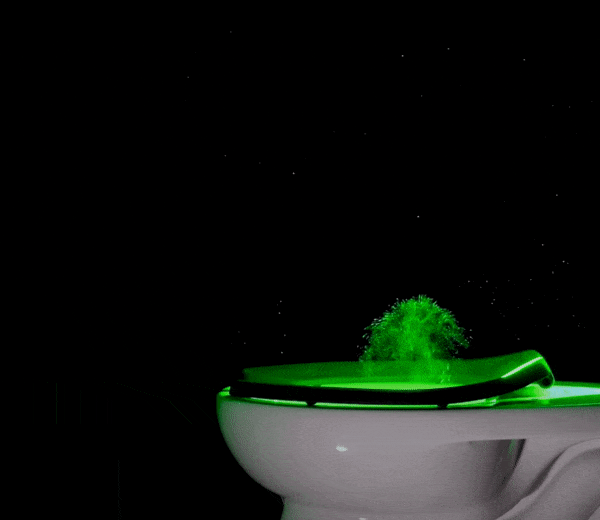Engineering
These Tiny Bugs Urinate by Flinging Droplets of Pee
Sharpshooters are the first example of “superpropulsion” in a living organism, according to new research
Can Green Hydrogen Help Power Latin America?
In anticipation of future demand, several projects are underway in the region to produce this clean energy source
Genetically Modified Trees Are Taking Root to Capture Carbon
A start-up created the plants to help combat the climate crisis, but they have so far only been tested in a lab setting
In 1946, a Black Pilot Returned to the Cockpit After a Double Amputation
Neal V. Loving, whose memoir will soon be released by Smithsonian Books, built his own planes, ran a flight school and conducted research for the Air Force
How Quixote’s Windmills Inspired a Spanish Inventor to Envision Vertical Flight
The autogiro finds new fans a century after its first liftoff
Seven Scientific Discoveries From 2022 That May Lead to New Inventions
Nature is a breeding ground for innovative solutions to everything from aging to plastic pollution
The Etymology of Unobtanium
The much-mocked wonder-rock from the 2009 blockbuster 'Avatar' doesn’t have an atomic number, but engineers have used the actual word for decades
Here's What Really Happens When You Flush a Toilet
Using lasers and cameras, scientists visualized the plume of tiny, aerosolized particles ejected from commercial toilets during flushing
Engineers Pick the Ten Best STEM Toys to Give as Gifts in 2022
Children can build strategy, critical thinking and resilience during expert-approved play
Shark Skin-Inspired Materials Have a Long Way to Go Before They Work Like the Real Thing
The predator's distinctive texture is the envy of engineers trying to maximize hydrodynamics
A Ukrainian Teenager Invents a Drone That Can Detect Land Mines
Seventeen-year-old Igor Klymenko worked on his invention while sheltering in a basement from Russian attacks
How Artemis 1 Honors an Apollo 13 Hero—and a Champion for Diversity in Space
A mannequin that will orbit the moon is named for Arturo Campos, a Mexican-American electrical engineer who worked on several NASA missions
Cornea Implants Made From Pig Skin Restored Eyesight in a Small Clinical Trial
Fourteen patients who were blind could see again after the surgery, and three of them attained perfect vision
This 17-Year-Old Designed a Motor That Could Potentially Transform the Electric Car Industry
Robert Sansone's research could pave the way for the sustainable manufacturing of electric vehicles that do not require rare-earth magnets
Have Scholars Finally Identified the Mysterious Somerton Man?
New DNA analysis suggests a body found on a beach in Australia in 1948 belongs to Carl Webb, an electrical engineer from Melbourne
This Wearable Ultrasound Sticker Can Continuously Image Organs for 48 Hours
Developed by engineers at MIT, the new technology is about the size of a postage stamp
The Sea Is Slowly Consuming Quebec's Magdalen Islands
Those living in the doomed paradise face a stark choice: resist, adapt, or give in to the ravenous ocean
Skin Helps Explain Why Elephant Trunks Are So Handy
Researchers discovered that the skin on the top of the trunk is more pliable and can stretch farther than the bottom
This Dissolvable Implant Could Revolutionize Pain Management
After some success on rats, researchers are hopeful this device could provide humans a more targeted and less addictive alternative to opioids
The Record-Shattering Airplane Behind a Dashing Pilot’s Meteoric Rise to Fame
Roscoe Turner's air racer takes center stage this fall when newly renovated galleries open at the National Air and Space Museum
Page 3 of 21

:focal(800x301:801x302)/https://tf-cmsv2-smithsonianmag-media.s3.amazonaws.com/filer_public/2c/04/2c040cdf-fad8-46d4-a1ef-839362d6a741/green-hydrogen-1600x600.jpg)
:focal(400x267:401x268)/https://tf-cmsv2-smithsonianmag-media.s3.amazonaws.com/filer_public/17/21/1721f45a-5981-4324-bee8-82d97f80327f/sei_142266184.jpg)
:focal(1182x901:1183x902)/https://tf-cmsv2-smithsonianmag-media.s3.amazonaws.com/filer_public/aa/a1/aaa12b12-27fb-4db7-8393-3ee25694d13c/screenshot_2023-02-01_at_112503_am.png)
:focal(800x602:801x603)/https://tf-cmsv2-smithsonianmag-media.s3.amazonaws.com/filer_public/0f/53/0f5391b7-d451-47a5-a137-1f0b74ac0d3f/gettyimages-613463344.jpg)
:focal(985x765:986x766)/https://tf-cmsv2-smithsonianmag-media.s3.amazonaws.com/filer_public/0a/5b/0a5b3c00-b83d-4d6c-a776-f2a1c0322763/gettyimages-1205952179.jpg)
:focal(548x456:549x457)/https://tf-cmsv2-smithsonianmag-media.s3.amazonaws.com/filer_public/87/9b/879b66b5-ca65-41ed-bce0-43f12d103eee/ezgifcom-gif-maker.jpg)

:focal(1500x1000:1501x1001)/https://tf-cmsv2-smithsonianmag-media.s3.amazonaws.com/filer_public/49/01/4901dfd6-d51a-4f9b-91aa-4c7180c0142e/2022_purdueegg_top10close_highres.jpg)
:focal(3600x2400:3601x2401)/https://tf-cmsv2-smithsonianmag-media.s3.amazonaws.com/filer_public/29/41/2941d998-397e-4e4a-9166-345e47412a36/header-uncropped.jpg)
:focal(640x347:641x348)/https://tf-cmsv2-smithsonianmag-media.s3.amazonaws.com/filer_public/cd/83/cd839801-a700-4fe5-9a7c-4875a587e6bf/photo_2022-05-19_15-42-05.jpg)
:focal(1340x740:1341x741)/https://tf-cmsv2-smithsonianmag-media.s3.amazonaws.com/filer_public/05/88/0588524b-3146-44bb-aa3f-d54507eb6f48/manikin_image.png)
:focal(3024x2016:3025x2017)/https://tf-cmsv2-smithsonianmag-media.s3.amazonaws.com/filer_public/19/46/1946044c-a42f-42e4-97c5-79c9360b0523/hornhinneforskning-lagali-rafat-2022-06-22-tb-_dsr9958.jpg)
:focal(4128x2752:4129x2753)/https://tf-cmsv2-smithsonianmag-media.s3.amazonaws.com/filer_public/a8/1e/a81ee0b2-9f11-4597-911a-b80458860bfe/etsd014_robert_sansone_usa_0026_ca_1.jpg)
:focal(700x527:701x528)/https://tf-cmsv2-smithsonianmag-media.s3.amazonaws.com/filer_public/be/33/be337a3d-3aeb-42e4-9631-5c3938eac615/somerton_man_copy.jpg)
:focal(1500x1000:1501x1001)/https://tf-cmsv2-smithsonianmag-media.s3.amazonaws.com/filer_public/a8/bc/a8bc5917-1881-4d86-b88f-2a8abf600ccf/mit-ultrasound-sticker-01-press.jpeg)
:focal(2226x1505:2227x1506)/https://tf-cmsv2-smithsonianmag-media.s3.amazonaws.com/filer_public/0e/aa/0eaa700c-8126-4e82-9957-8bb359497492/gettyimages-1190593801.jpg)
:focal(960x722:961x723)/https://tf-cmsv2-smithsonianmag-media.s3.amazonaws.com/filer_public/f2/32/f23214d2-9c7d-4a68-8f84-a9a841f3d073/elephant-114543_1920.jpg)
:focal(2736x1537:2737x1538)/https://tf-cmsv2-smithsonianmag-media.s3.amazonaws.com/filer_public/12/88/1288d739-90a8-4a00-b378-86e965d01144/img_4419.jpg)
:focal(1000x752:1001x753)/https://tf-cmsv2-smithsonianmag-media.s3.amazonaws.com/filer_public/90/98/9098debb-cff2-4dba-82d4-857753c6cc40/nasm-nasm2014-04006.jpg)